Among several species lost as breeding birds from Britain over the course of the last century was Kentish Plover Charadrius alexandrinus. Formerly a localised breeder in south-eastern England, the species is now a rare migrant, with just 13 records in 2016 putting it on a par with some rarities [officially recognised in April 2020 as a rare bird by the British Birds Rarities Committee – eds].
Despite the parlous situation in Britain, this neat and charismatic wader is still relatively easy to see on the beaches of continental Europe, from western Denmark all the way round to, and throughout, most of the Mediterranean. Beyond Europe, its range extends south to northern Liberia in west Africa, and east as far as Japan and Indonesia. Kentish Plover is present all year in most of its coastal range, but is a summer visitor to Central Asia as far north as southern Russia, Mongolia and China. It winters in the northern half of Africa, northern India and South-East Asia. The further east you travel, the less confined to coastal habitats this wader becomes.
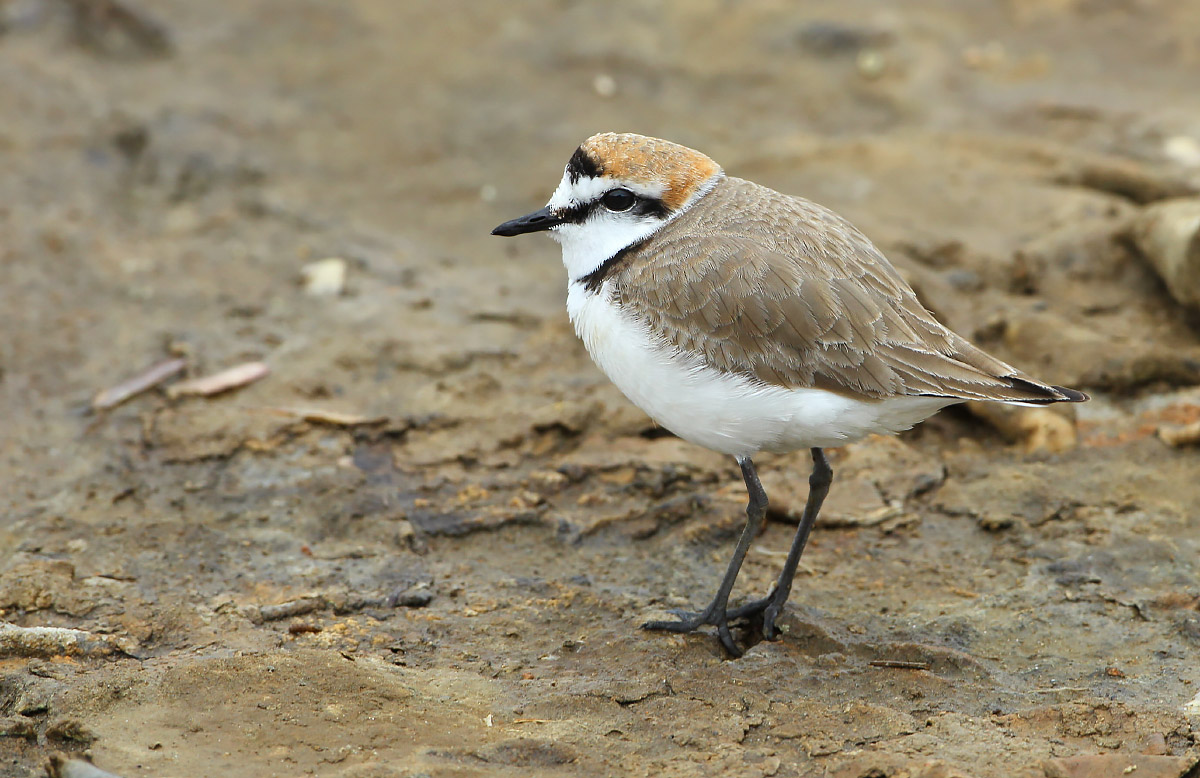
Male Kentish Plover is a subtly beautiful shorebird, with snow-white underparts and face set off by a black forehead, lores, eye-stripe and shoulder patch, and plain sandy-brown mantle, back and wings (Aurélien Audevard).
The species is no longer considered part of the Nearctic/Neotropical avifauna, with the two forms found there now split as Snowy Plover. A further subspecies – 'White-faced Plover' C a dealbatus, which breeds in south-eastern China and winters south to Sumatra – is also viewed as a potential split, pending further research. Otherwise, the species has three recognised subspecies: nominate (by far the most migratory form), which extends across most of the range mentioned; C a nihonensis, which breeds in south-eastern Russia through China, Korea, Japan and Taiwan; and C a seebohmi, which is largely resident in southern India and Sri Lanka. The birds occurring in Britain are of the nominate form; although there have been a few suspected Snowy Plovers, none has been confirmed.
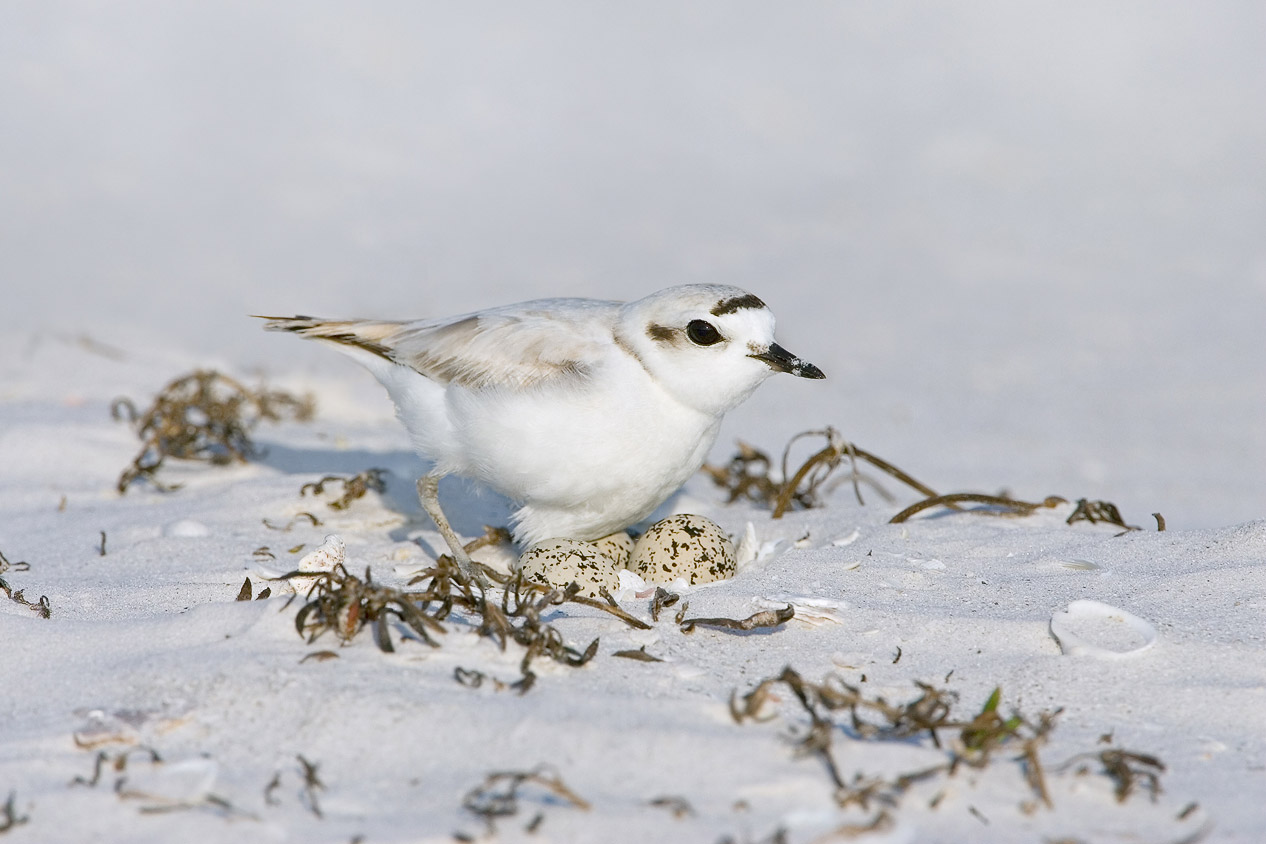
Snowy Plover was recently thought to be the North American form of Kentish, but has now been split. Birds in Florida, such as this, are significantly paler, though those from further north are much closer to European birds in appearance (Melvin Grey).
Distinctive plumage
In breeding condition, the male is separable from other small European plovers by its orange hind-neck, black epaulettes and restricted black facial markings. The species' basic structure and jizz is that of a familiar 'ringed-type' plover, though it is more slender and darting, sometimes associating with Sanderlings on migration and in winter. Summer males also have a white forehead and wide supercilium, a white collar and black lores, ear coverts and 'forelock' at the front of the crown. Males have a pristine white throat and underparts to the very end of the undertail coverts, and light grey-buff upperparts. Overall, the species looks paler than other small Charadrius plovers, with a shorter rear end with no primary projection and dark legs and breast patches restricted to the breast-sides, rather than forming a complete collar as in its congeners.
Adult females look more bland, resembling winter males, with just a hint of orange or rufous at the rear of the supercilium and no black markings, though a darker brown epaulette can show in winter. Juveniles/first-winters are similar to females, but with paler legs and even less obvious breast-side patches.
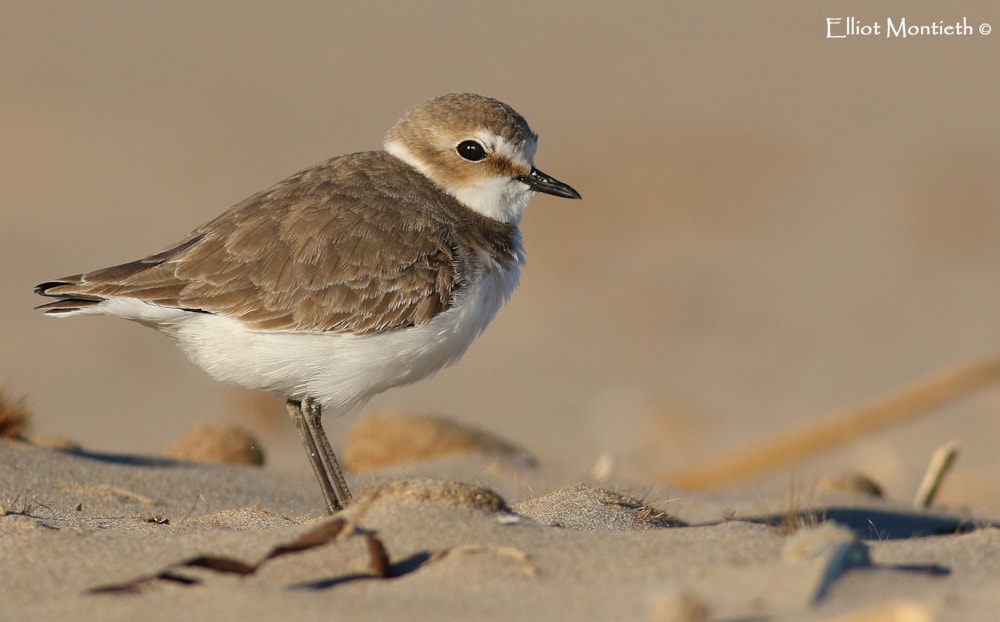
Female Kentish Plovers resemble winter males, lacking the black facial markings and showing just a hint of rufous (Elliot Montieth).
In flight, the species appears paler than its closer relatives, not just from its upperparts but also because it has wider white sides to the tail, uppertail coverts and rump, leaving just a thin grey-brown band extending down the rump to the dark tail. It also has quite wide white flashes on its dark wings, extending from the secondaries at the wing bases halfway down the primaries, petering out gradually almost to the very end of the wing.
Decline and fall
Kentish Plover was first described from its nominal county in 1787. Breeding numbers peaked at around 40 pairs in the early to mid-20th century, all in Kent (where Dungeness held the bulk of the population until the 1930s), Sussex, Suffolk and Lincolnshire. On the British mainland, the last pair bred at Gibraltar Point, Lincolnshire, in 1979. It last bred on the Channel Islands in 1975, though it is still regular – though scarce – on the shores of France, Belgium and The Netherlands.
The British Trust for Ornithology lays the blame for these declines firmly at the feet of disturbance and greater recreational use of beaches. This is compounded by the ravages of climate change, pollution, land reclamation and the over-management of rivers, influencing both the flow rate and the amount of silt deposited. Additionally, the bird's use of artificial habitats such as gravel pits and reservoirs in much of its European range may also be affected by changes in suitability from year to year. These provide similar analogues to its natural breeding substrates of sparsely sheltered fine gravel, sand, silt and dry mud, on which it mostly nests as a lone pair or in a loosely spaced colony with several other pairs.
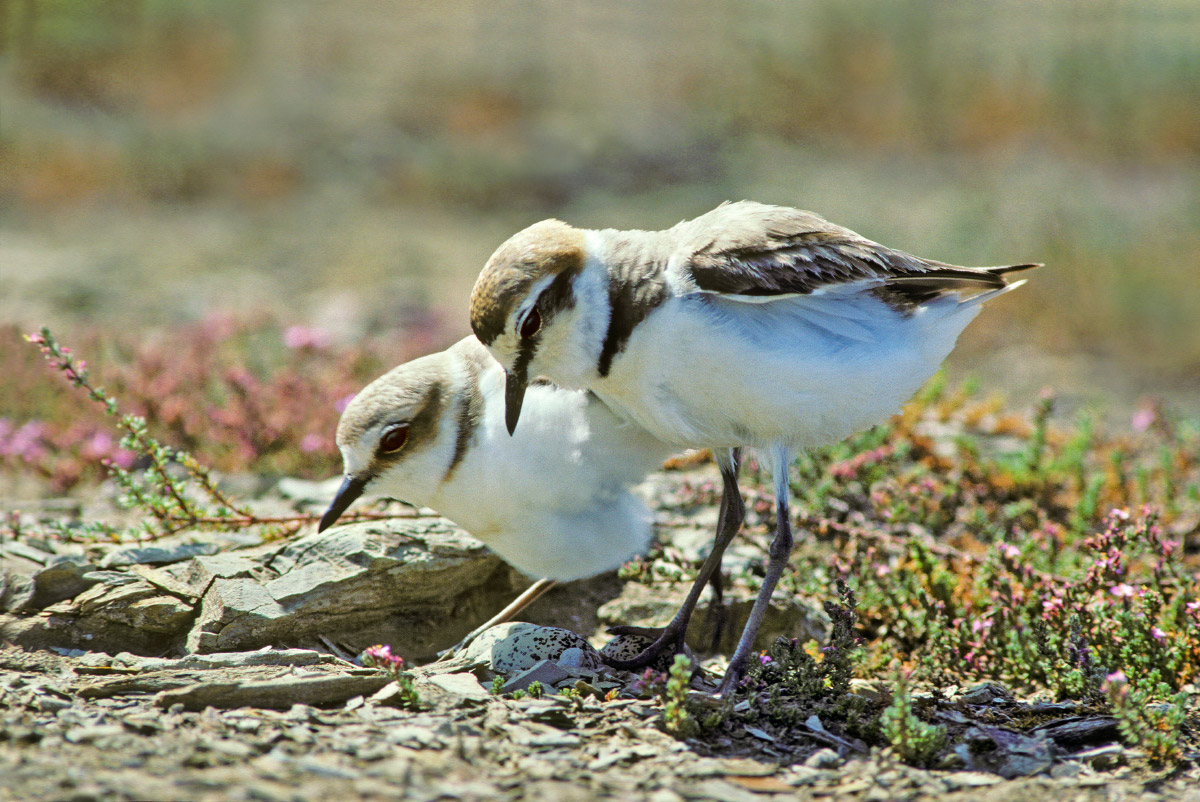
Like so many other beach-nesting species, increased disturbance from humans has negatively impacted Kentish Plover populations (Melvin Grey).
Nesting and feeding
The nest is a frugal shallow scrape not far from saline or brackish water (even when inland), sometimes partly obscured by a small amount of vegetation, in which an average of three eggs are laid. As in other small Charadrius plovers, pairs are seasonally monogamous from their second calendar year onwards, which means that song flights and scraping displays occur every year prior to nesting near the desired breeding and feeding sites.
Males show high site-fidelity in spring, with females acting more as 'free agents'. A complete mating ceremony takes place on the breeding territory, starting with the male's scraping ritual. This involves the male contact calling and running to the proposed nest-scrape site, crouching and scratching the ground with its feet. Once a prospective partner is lured in, its suitor emerges from the scrape area and stands with its back to the female, running and stopping frequently with 'goose-stepping' strides. This stimulates the female to lower her body and expose the cloaca, after which copulation occurs.
After around 26 days, an average of 56 per cent of the eggs survive to hatch. The resulting chicks are quickly able to partially fend for themselves, being downy, mobile and able to catch their own small items of prey; they fledge after about 30 days. The nesting area is almost immediately deserted after hatching, with chicks being led to nearby foraging grounds. Kentish Plover has occasionally been seen marshalling stray Ringed Plover chicks among its own brood, though never those of Little Ringed Plover, and has readily accepted chicks of the former in experimental displacements.
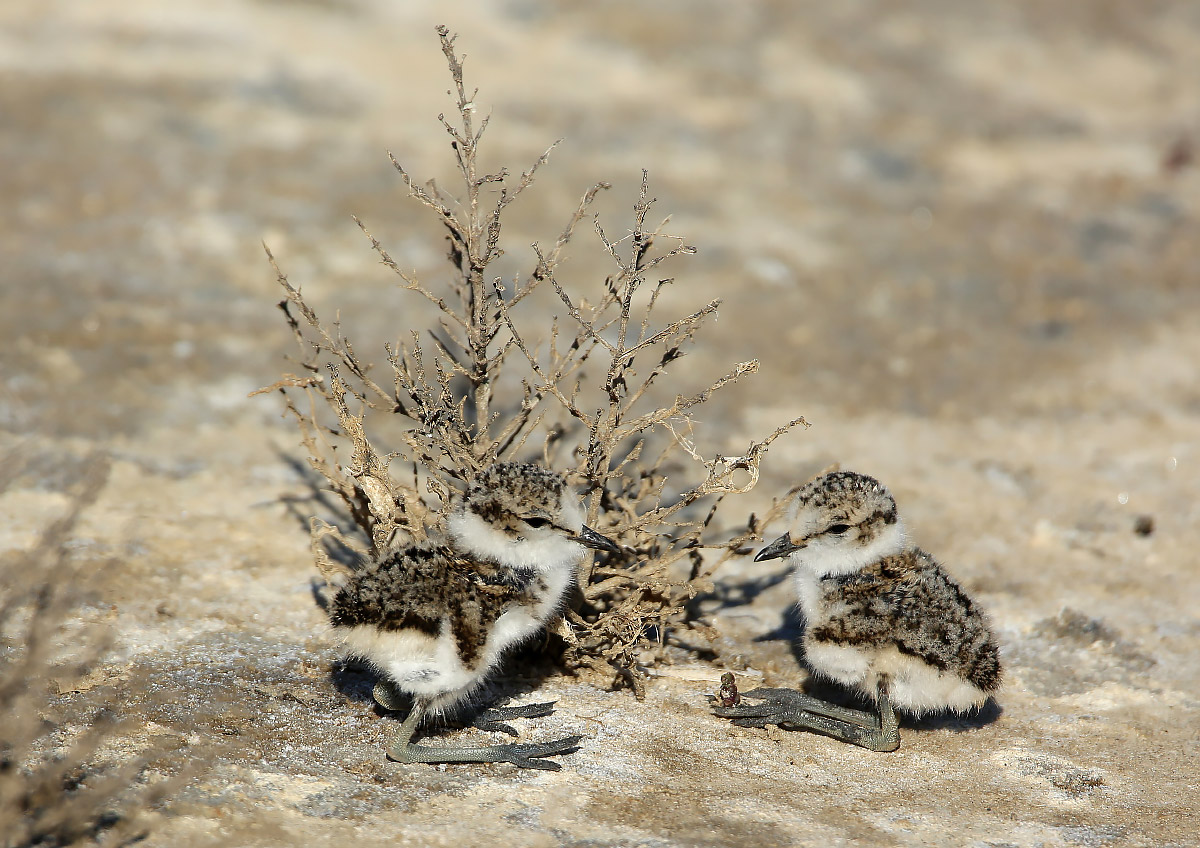
The chicks of Kentish Plover are very precocial, being marched off to foraging areas soon after hatching, though they are looked after by their parents continuously until fledging (Aurélien Audevard).
Kentish Plover's food is varied but unsurprising as a tideline and beach denizen: larval and adult insects, spiders, crustaceans, small molluscs and coastal worms, along with fragments of eel-grass and seaweed. Outside the breeding season, the species often forages and migrates in small flocks, though lone individuals and flocks in their hundreds are known, and it frequently mixes with other Charadrius species. Kentish Plovers roost communally with other waders at high tide, in tight clusters above the tideline.
Despite this apparent sociability, Kentish Plovers can be very aggressive towards each other, though less so towards their close evolutionary relatives. They have been recorded apparently choosing to nest among easily riled species such as Northern Lapwing and Collared Pratincole, most likely for the vociferous added security against predation.
Breeding pairs can be very territorial, but the intensity of this behaviour depends on the density of adjacent nesting pairs and the availability of food nearby. The antagonistic behaviour can continue into winter, with certain individuals avoided and some infractors being chased. Birds may also be pursued on the ground, the aggressor hunching its shoulders, fanning its tail and erecting its crown feathers.
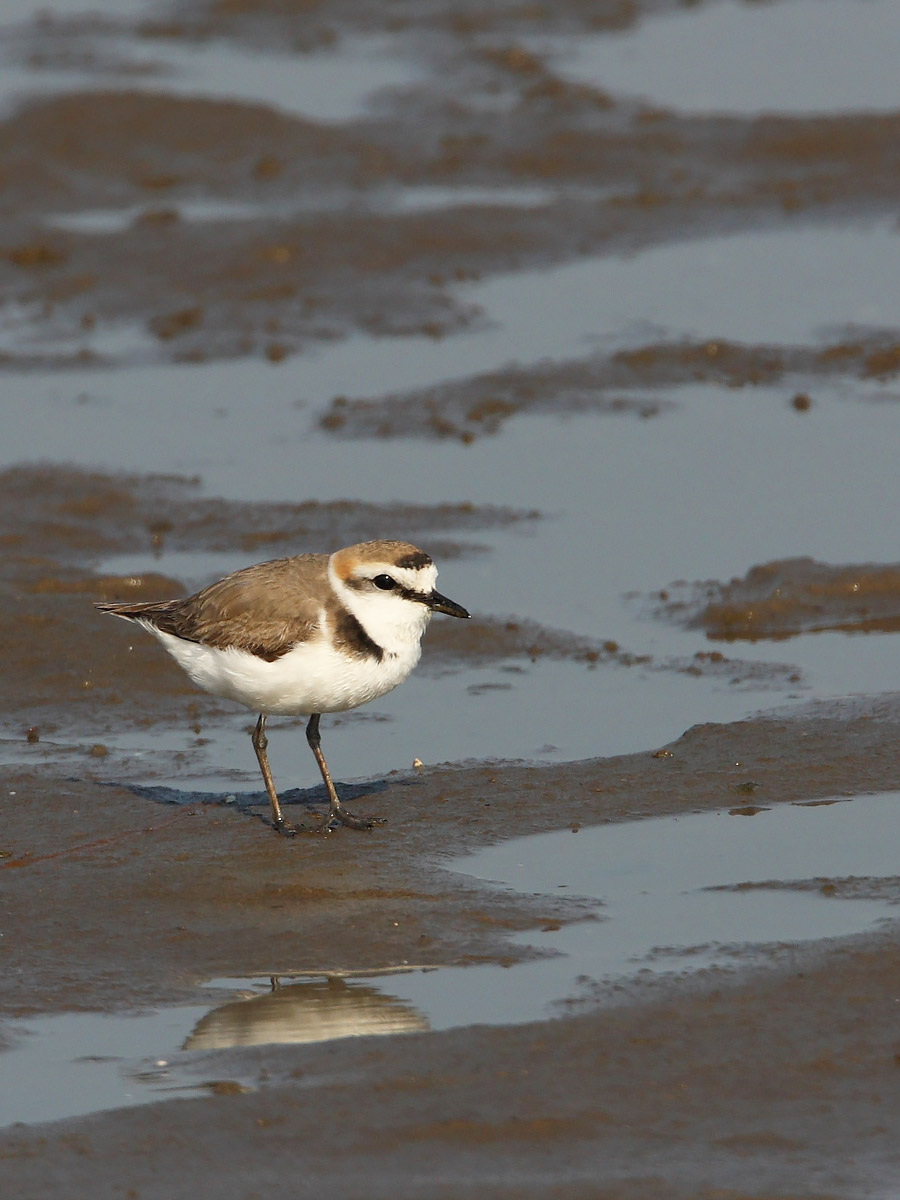
Kentish Plover was once a regular sight in English beaches, particularly in the south-east. However, it is now a rarity in Britain, with just 96 records in the decade to 2020 (Neil Bowman).
Globally, the conservation status of Kentish Plover is categorised as Least Concern by BirdLife International, mostly because of its estimated worldwide population of up to 500,000 individuals and its immense, pan-continental distribution. However, the decreases mentioned are apparent over its whole range, which is becoming somewhat fragmented. Britain, on the very western edge, is in the unfortunate position of being one of the first countries to lose it as a breeding species. The numbers were probably always low and fluctuating here, but appropriate habitats still exist which may yet tempt it back to breed.
- This article was originally published in the March 2017 issue of Birdwatch magazine. You can subscribe to the magazine here; BirdGuides Bird News Ultimate customers receive a free copy as part of their subscription package. To find out more about an Ultimate subscription, click here.
References
- Balmer, D, Gillings, S, Caffrey, B, Swann, B, Downie, I, and Fuller, R. 2013. Bird Atlas 2007-11. BTO Books, Thetford.
- BirdLife International. 2017. Species factsheet: Charadrius alexandrinus. Downloaded from www.birdlife.org on 16 January 2017.
- Gómez-Serrano, M A, and López-López, P. 2014. Nest Site Selection by Kentish Plover Suggests a Trade-Off between Nest-Crypsis and Predator Detection Strategies. PLOS One 9: e107121 journals.plos.org/plosone/article?id=10.1371/journal.pone.0107121.
- Kennerley, P R, Bakewell, D N, and Round, P D. 2004. Rediscovery of a long-lost Charadrius plover from South-East Asia. Forktail 24: 63-79.
- Küpper, C, Augustin, J, Kosztolányi, A, Burke, T, Figuerola, J, and Székely, T. 2009. Kentish versus Snowy Plover: phenotypic and genetic analyses of Charadrius alexandrinus reveal divergence of Eurasian and American subspecies. The Auk 126: 839-852.
- Palmer, P. 2000. First for Britain and Ireland 1600-1999. Arlequin Press, Chelmsford.
- Rheindt F E, Székely T, Edwards S V, Lee P L M, Burke T, Kennerley, P R, Bakewell, D N, Alrashidi, M, Kosztolányi, A, Weston, M A, Liu, W-T, Lei, W-P, Shigeta, Y, Javed, S, Zefania, S, and Küpper, C. 2011. Conflict between genetic and phenotypic differentiation: the evolutionary history of a 'lost and rediscovered' shorebird. PLoS ONE 6(11): e26995. doi:10.1371/journal.pone.0026995.
- Snow, D W, and Perrins, C M. 1998. BWPi. BirdGuides, London.



